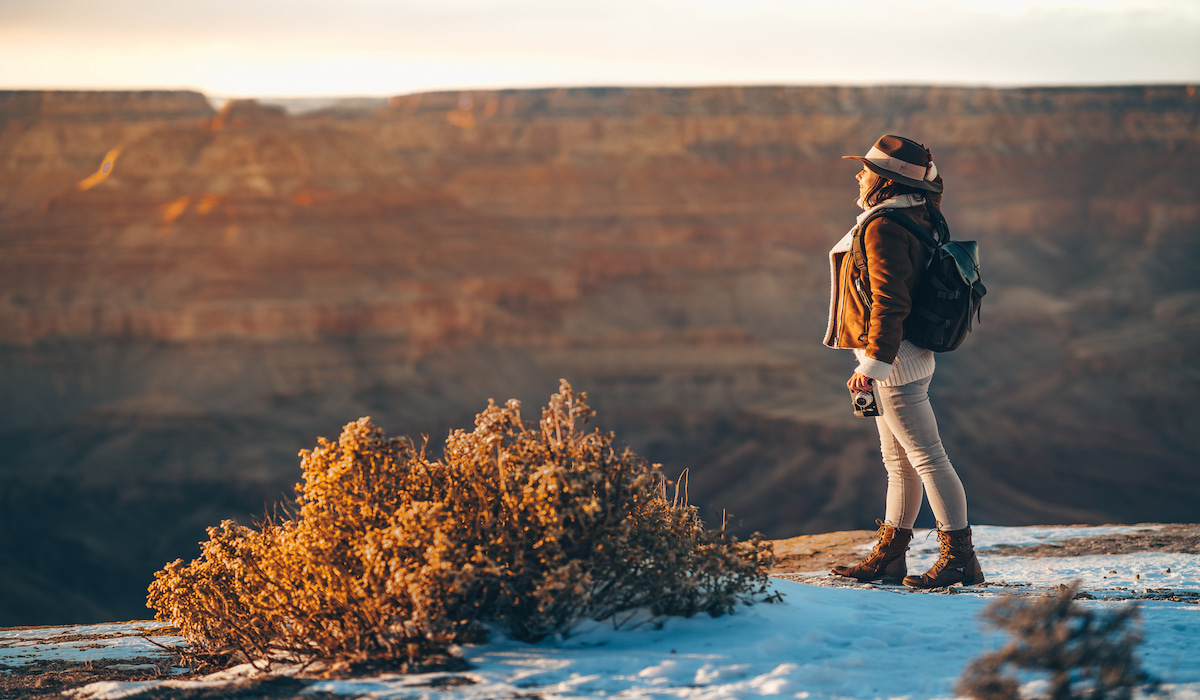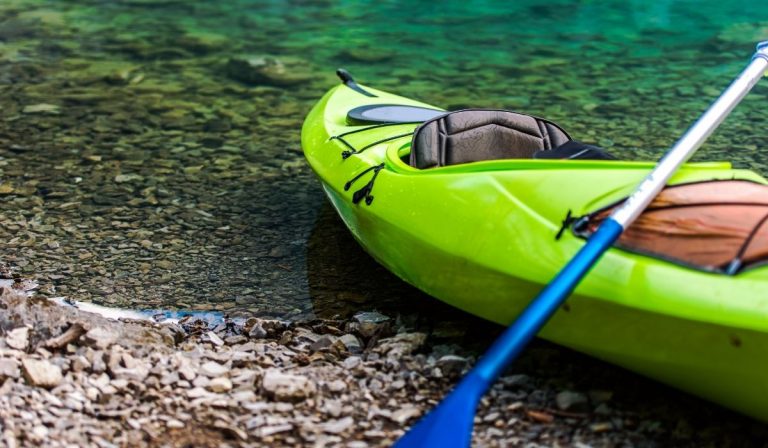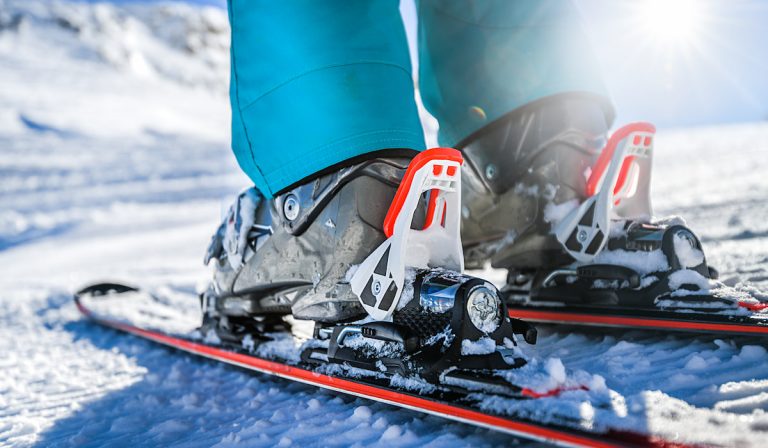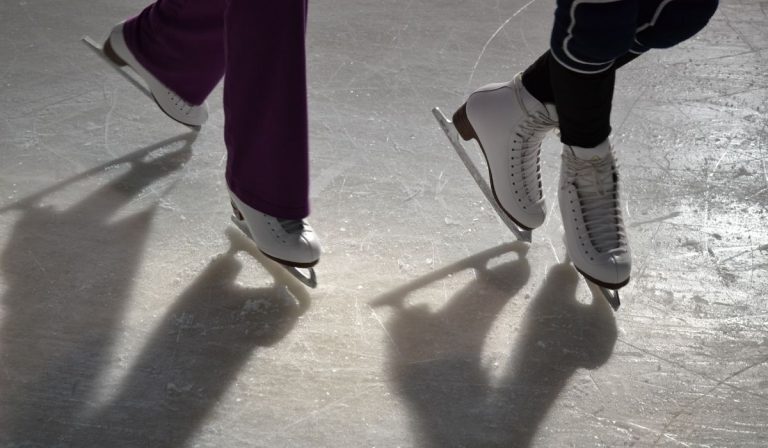Plus-Size Hiking
When you read outdoor magazines or watch hiking films, you won’t often come across plus-size hikers. However, you’ll be surprised to know that there are plenty of plus-size hikers who love the outdoors and hike regularly.
Hiking as a plus-size person can be intimidating if this is the first time. Nevertheless, it gets easier with regular practice and learning different tricks to survive the trail.
Our detailed guide has everything you need to know about plus-size hiking.
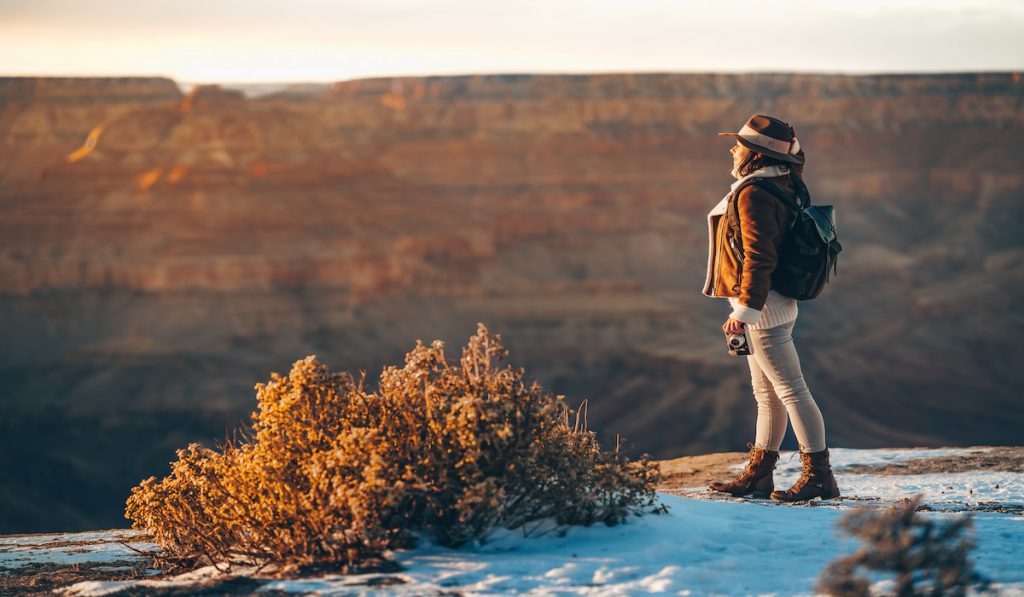
Why Should an Overweight Person Hike?
Hiking is an outdoor activity that doesn’t require a lot of preparation. It’s a sporting activity that is suitable for everyone.
If you’re still undecided on whether you should go hiking or not, here are some benefits of hiking for a heavy person.
- Leads to Improved Fitness – Hiking for a day won’t make you fit, but increasing the intensity over time will. Regular hiking also increases your stamina which allows you to cover extra miles without a lot of effort.
- Lose Weight – Hiking can help you lose weight and maintain the right body weight. The more you hike, the more calories you lose. If your goal is to lose weight, hiking can be a great starting point.
Although the amount of calories burned depend on your gender, weight, and aerobic intensity, you’ll realize that even small hikes can lead to gradual weight loss. Moreover, hiking helps to improve your blood pressure and blood sugar levels, which leads to improved overall health.
- Better Sleep – Hiking exerts your physical and mental energy. That exertion encourages your body and mind to relax after a long day and leads to better sleep. Exercise boosts melatonin, a sleep hormone, and hiking is no exception.
Getting Started as a Plus-Size Hiker
Here are a few things you need to get started.
1. Hiking Clothing
Every hiker experiences issues like body aches, blisters, and burns. As a plus-size hiker, you may find that ill-fitting gear can add to these pains and make your hiking experience uncomfortable.
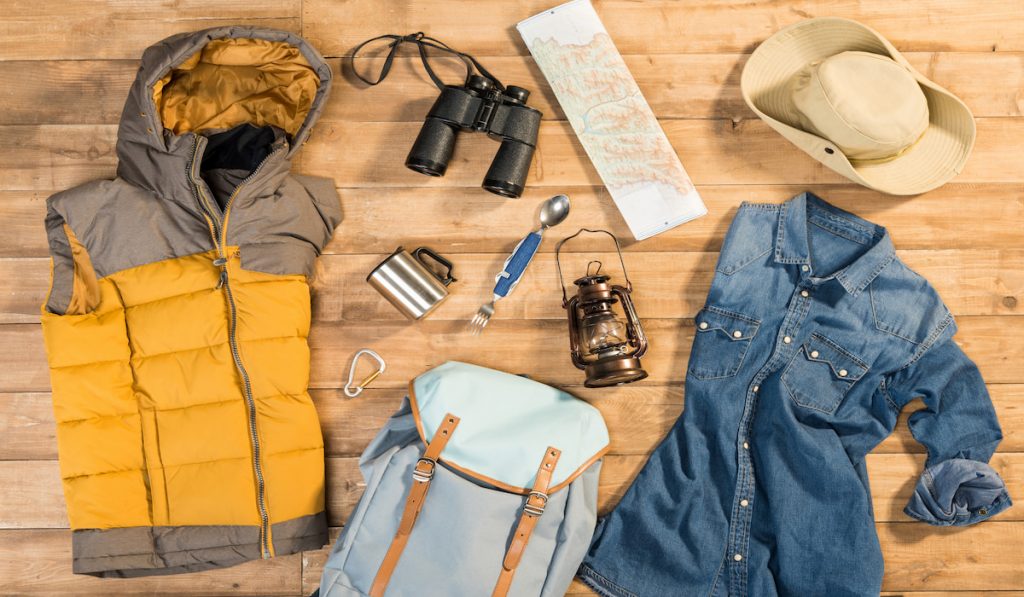
Having the right clothing and gear can make all the difference. You need to get:
The Right Footwear
The last thing you want is to end up with feet that are wet, cold, or hurting after a short trail. It’s best to find comfortable hiking boots designed for heavy bodies. These boots provide enough support over long distances and are available in wide sizes.
You can also get waterproof boots for when you need to trudge through the rain or hike in low snow.
Comfortable Clothing
When hiking, you need to think of the three layers rule. The first layer or base layer includes a T-shirt or vest and undergarments. This layer wicks the sweat away from your skin. Avoid cotton t-shirts as they are heavy and can make you sweaty.
The second layer is also known as an insulating layer. That means you need clothes to maintain the heat your body creates, and the insulating layer works to keep you warm. Fleece jackets fit into this category.
The last layer protects you from external weather elements that could affect your body temperature. You need water-resistant or waterproof jackets when hiking to protect yourself from bad weather.
Ensure that you stop by outdoor gear companies when shopping for hiking clothes as they have plenty of options for plus-size hikers.
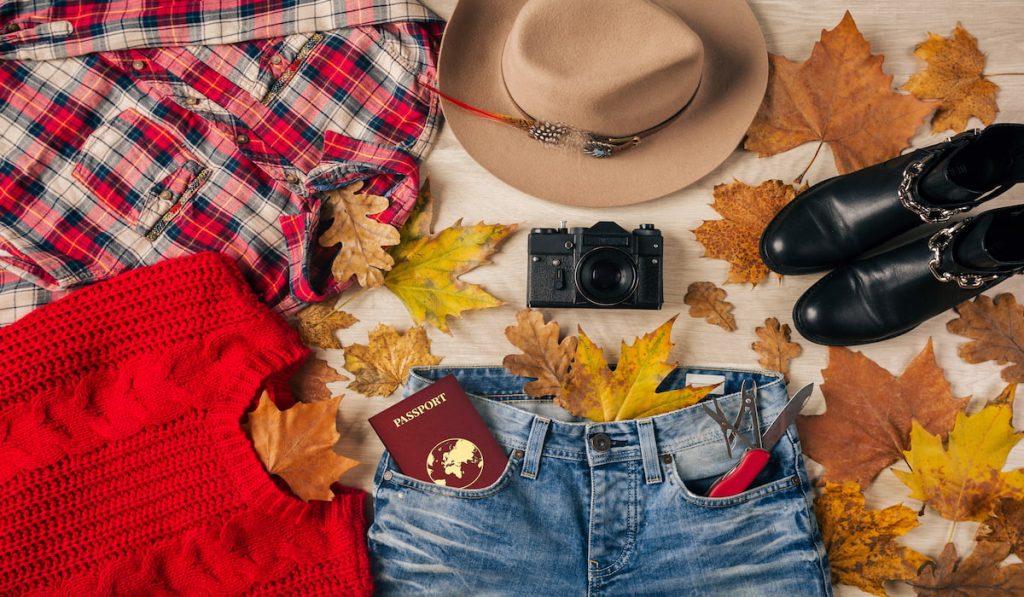
Find breathable and comfortable shirts that will accommodate your arms and allow you to move freely. The shirt should also have a nice stretch without feeling loose as you move around.
Some companies have shirts with venting that allow for enough airflow.
If you’re planning to hike during the cold weather, you need something that you can easily layer with other clothes. Choose shirts made from wool for added warmth.
Hiking pants should be light and protect against chub rub. Ensure that you go through the sizing chart and read reviews before purchasing. There are also leggings and tights from brands like Athleta that are perfect for day hikes. These pants have a mesh that provides airflow and are comfortable to wear all day.
Don’t forget to get comfortable underwear. Look for a comfortable bra that provides ample support and has soft, but breathable fabric.
Other tips to have in mind when shopping for hiking clothes include:
- Avoid overspending on jackets and instead invest in quality hiking boots.
- Pick gloves, headgear, and pants in dark colors, but pick bright-colored jackets to stand out against rocks and other natural backgrounds like forests. Outer jackets in blue, orange and pink are excellent.
- Always opt for weather-resistant pants if you are going for a hike that takes more than a day.
- Avoid hiking shoes with anti-gravity technology if you’re planning on hiking a regular trail. These shoes are heavy to carry and maybe unnecessary. Opt for quality hiking boots with a stable grip.
2. Hiking Gear
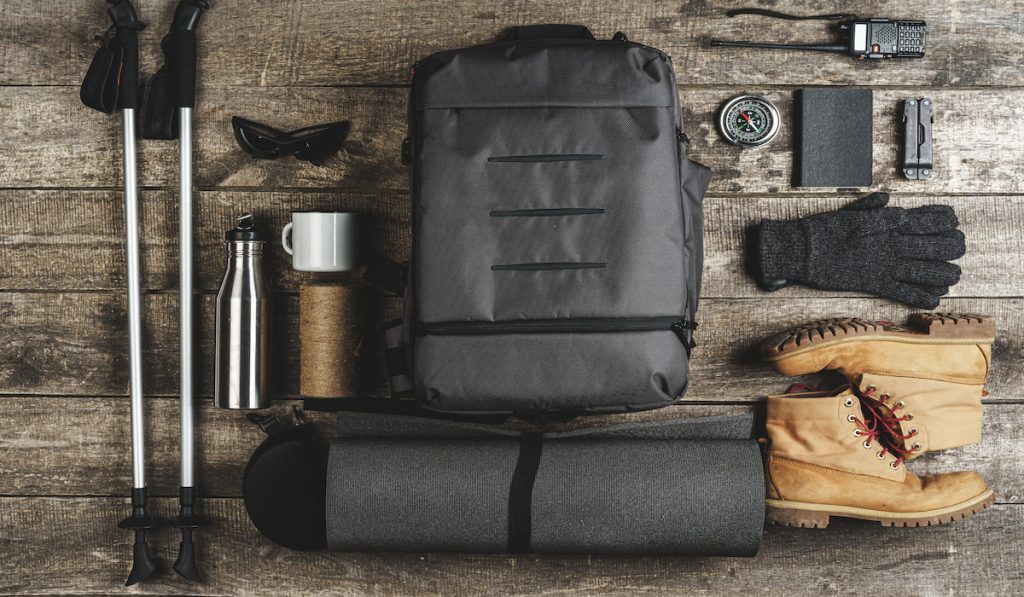
Another thing you should not miss on your hiking essentials is the trekking poles. These poles are essential as they provide support and stability when hiking on any terrain.
You’ll find that a pole helps you push uphill or reduces the tension when coming down a trail.
When choosing trekking poles, make sure that you get some that are long enough and have a 90-degree angle on the elbows when you hold them. Check that the shafts are durable and the grips are comfortable enough to not blister your hands.
3. A Tent
If you plan on spending most of your day hiking and exploring different trails, you’ll need a roomy tent that allows you to sprawl out when sleeping. It should also be easy to step out of.
You’ll find that some tents are spacious enough to be used as a stretching area or a changing room. The right tent should also be easy to set up and pack up.
Additionally, you need a sleeping bag that can accommodate you and keep you warm in case the weather changes. You can choose to add a sleeping pad for insulation and comfort.
4. A Backpacking Pack
You also need a backpack that can accommodate your sleeping bag, tent, and other gear.
Look for a backpacking pack with an extended-length shoulder strap, hip belt, and a moisture-wicking ventilated back panel. Check its pockets and zipper locations. Lastly, don’t forget to check its size, weight, and capacity.
As a beginner, consider ultra-light packing. Pack the simplest and lightest clothing and gear. That will make it easier to navigate and move quickly. Always bring extra clothes or interchangeable clothes to reduce your load.

Additional Tips on Hiking as a Plus-Size
Hiking when you are heavy can be a bit different from hiking when you’re fit. You need to account for certain factors, particularly if this is your first form of exercise.
Here are some tips to help you make this hiking journey successful and enjoyable.
Consult Your Doctor Before You Get Started
Checking in with your doctor is recommended before starting any strenuous kind of activity. This applies to people who are physically fit or overweight as you may have underlying medical conditions that could interfere with your hiking.
Let your doctor know that you plan on going hiking and he/she will advise accordingly.
Ensure That You Are Comfortable Before Heading Out
Make sure that you have comfortable clothes on. Your hiking shoes or boots should be designed for hiking and your backpack should not be too heavy to hinder your hiking experience.
Chafing is a common issue that affects both slim and overweight people. However, when you are heavier, you’re likely to suffer from chafing more.
Dealing with chafing can be uncomfortable as you may end up burned while walking. Fortunately, you don’t have to deal with discomfort as you can apply a balm or lotion to areas that tend to rub against each other. Some specific clothing can also help prevent chafing.
Lycra shorts or biker shorts help prevent chafing.
Hydrate
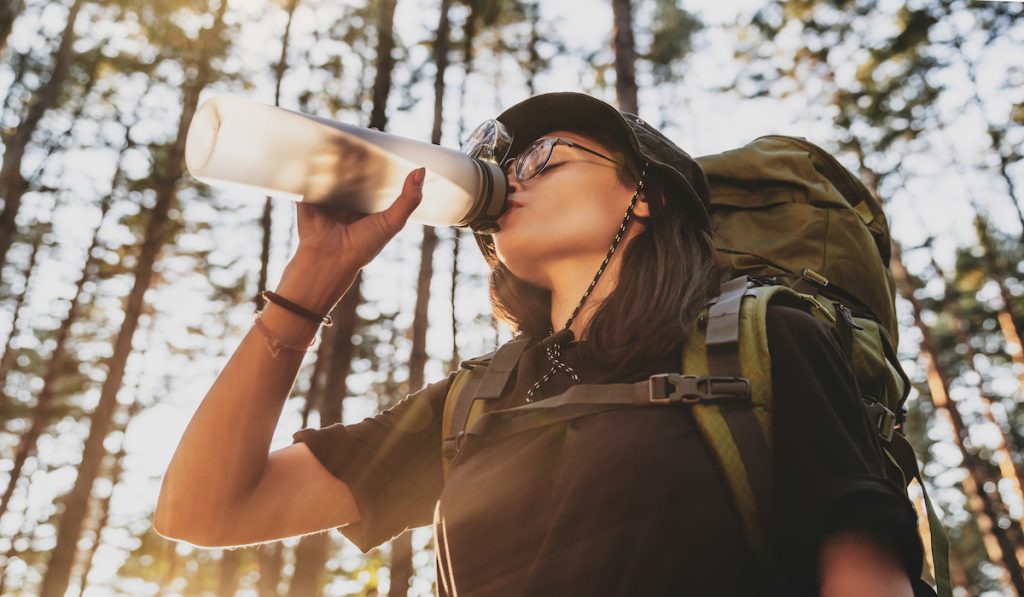
Hiking experts recommend drinking enough water before, during, and after a hike. Ensuring you’re hydrated gives your body the strength to keep pushing as it boosts your energy levels.
Remember to pack enough water before starting your hike.
Start With a Short Trail
Experts recommend starting with a short trail if you are overweight. These trails are short and not technical. Avoid going for a lengthy hike immediately. Start with the easiest hikes and progress from there.
There’s plenty of information online on hiking trails that you can use to determine a trail’s difficulty level and its length. You can also get information from free hiking apps.
Hike Often
Don’t wait to go for another hike soon after you’ve gone for the first one. You’ll find it more challenging to go for another hike when you wait.
Propose to hike at least once a week and target the easy trails first before moving to complex trails.
Additionally, take little walks daily to prepare for hikes. Walking makes hiking easier to get used to and makes you fit enough to handle lengthy trails.

Carry Snacks
Hiking can leave you feeling exhausted and hungry. To boost your energy, ensure that you have some snacks like a protein bar, dried fruit, or nuts. You can snack on them once you’re done with your hike.
Commit to the End
As a beginner, hiking may not be the most exciting experience. Nonetheless, don’t give up. Take a break if you have to and ask for support. Keep going and take one step at a time.
Final Thoughts
Hiking as a plus-size isn’t different from when you’re slimmer. Never allow anyone to tell you that you’re too overweight to tackle any outdoor activity.
However, when you are overweight, you need to understand some things and prepare in advance to avoid injuries. Consulting your doctor, wearing comfortable clothes, and understanding your hiking trail will help you get started right. Remember to have fun and enjoy yourself.
Sources
- https://gearuphiking.com/hiking-for-fat-people/
- https://www.theoutbound.com/wanderlustmtngirl/fat-girl-hiking-thoughts-and-tips-for-the-overweight-hiker
- https://gobackpacking.com/how-to-hike-overweight-tips/
- https://www.huffpost.com/entry/7-tips-for-fat-hikers-and_b_7646190
- https://deepertrails.com/hiking-while-overweight/
- https://www.summitstrength.com.au/blog/tft27-how-to-train-for-hiking-if-you-are-overweight
- https://www.hopkinsmedicine.org/health/wellness-and-prevention/exercising-for-better-sleep
